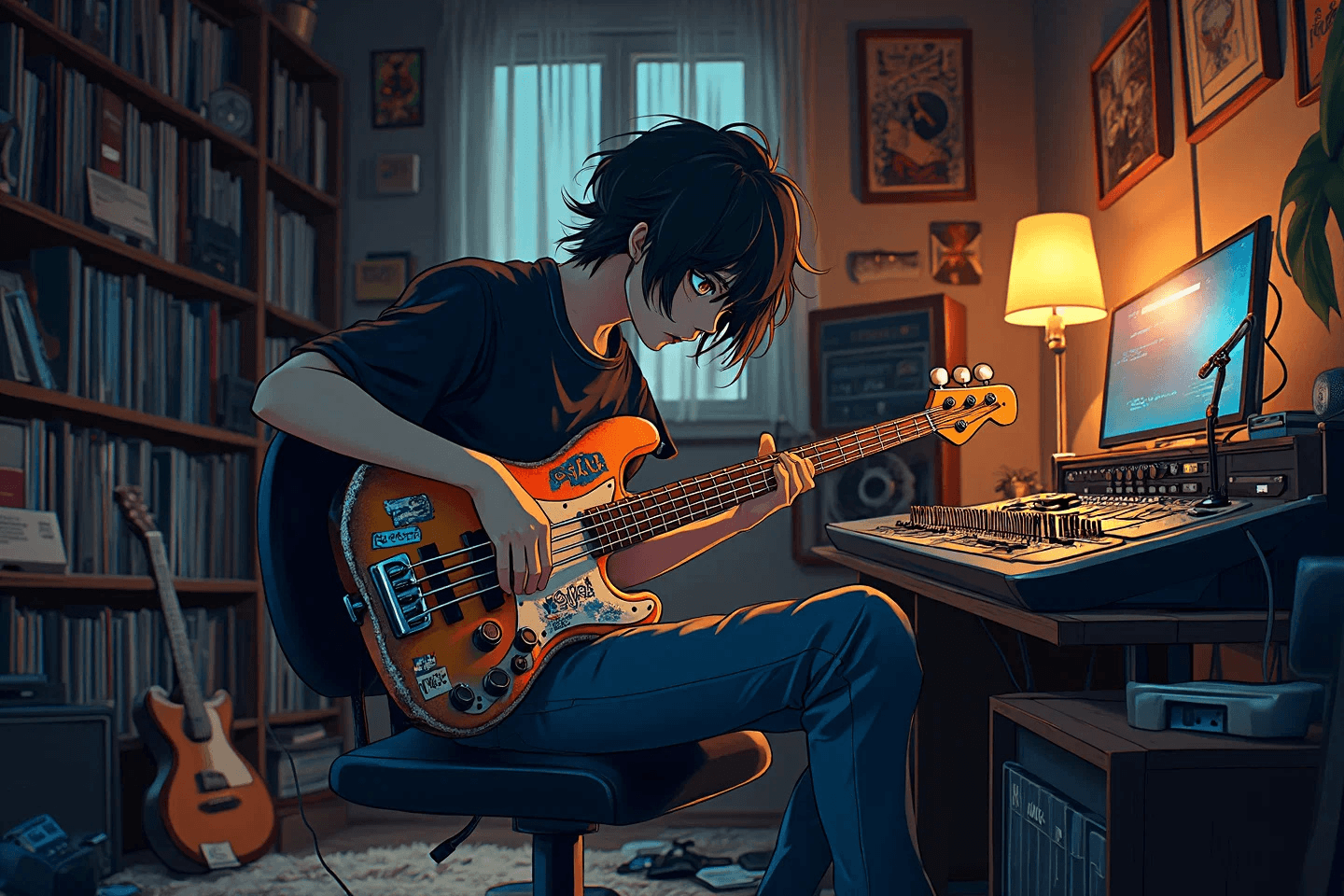LOFI MUSIC ACADEMY
Crafting Warm Basslines for LoFi Music Production
Creating a warm, groovy bassline is an essential step in any LoFi track. It forms the foundation of the song, providing rhythm and emotional depth without overwhelming the other elements. In this post, we’ll dive into tips and techniques for crafting the perfect bassline for your LoFi music. Whether you're a beginner or an intermediate producer, these guidelines will help you create basslines that complement your tracks and elevate their overall vibe.
The Role of the Bassline in LoFi
In LoFi music, the bassline acts as a subtle but crucial glue, binding together the drums, melody, and ambiance. It’s not just about providing low-end; a great LoFi bassline brings warmth and groove while staying simple and melodic. It should add to the track without overpowering it, letting the cozy, nostalgic feel of LoFi shine through.
Choosing the Right Bass Sound
The first step to crafting a warm bassline is selecting the right sound. In LoFi, we're looking for soft, vintage tones—nothing too harsh or aggressive. You’ll want a bass sound with warmth and body, like a classic analog synth bass or a smooth electric bass guitar sample. Popular options include using the MiniMoog or Juno-60 VSTs for that warm, vintage character.
When picking your bass sound, avoid anything with a bright, sharp attack. Instead, look for mellow tones that sit comfortably within the mix. If you're working with samples, search for bass guitar loops or even sub-bass samples to give your track a solid yet gentle foundation.

Simple, Groovy Patterns
LoFi basslines are typically simple yet effective. You don’t need to create complex patterns or fast-moving basslines. Instead, focus on groove and feel. Your bass should lock in with the kick and snare to create a smooth, flowing rhythm. Start with one or two root notes that follow the chord progression, adding variation with octave jumps or slide notes to keep it interesting without overcomplicating things.
The key to a great LoFi bassline is subtlety. Keep it minimal but let it groove. One tip is to sync the bass pattern with the kick drum, ensuring they don’t clash but instead work together to drive the track forward.
Adding Warmth and Texture
To give your bassline that warm, nostalgic feel, it’s important to use the right effects. Here are some go-to techniques:
Saturation: Adding tape saturation or analog warmth can enhance your bassline’s character, giving it that vintage LoFi vibe. Tools like RC-20 Retro Color or Softube’s Saturation Knob are excellent for this effect. Be careful not to overdo it—a little saturation goes a long way.
EQ: Apply a low-pass filter to roll off some of the higher frequencies and keep the bassline smooth and round. Boosting the low-mid frequencies (100-250Hz) will give your bass the warmth and body it needs without being overpowering.
Sidechain Compression: To add movement and groove, sidechain your bassline to the kick drum. This creates a subtle pumping effect, allowing the kick to cut through while the bass ducks out slightly with each hit. This is a common technique in LoFi to keep the rhythm section tight and cohesive.

Humanizing Your Bassline
LoFi music is all about feel—it’s supposed to sound human and imperfect, not overly polished. To achieve this with your bassline, add a touch of swing or adjust the timing of your MIDI notes. You don’t want everything to hit perfectly on the grid; slightly shifting notes off-beat can create a more relaxed, natural feel.
You can also humanize your bassline by adjusting the velocity of each note. This creates variation in the intensity of each hit, mimicking the dynamics of a real bass player. Even small changes in velocity can add a lot of emotion and depth to your bassline.
Layering Bass for Depth
For more advanced producers, try layering two different bass sounds. You can combine a deep sub-bass to fill out the low end and a higher bass layer with more texture and character. Make sure to EQ each layer appropriately—rolling off the lows on the upper bass layer helps avoid muddying the mix. This technique adds fullness to your bassline while keeping it clean and well-defined.
Final Thoughts Crafting warm basslines for LoFi music doesn’t have to be complicated. The key is choosing the right sound, keeping the pattern simple, and using effects to enhance warmth and texture. Whether you’re sidechaining to your kick drum or adding tape saturation for that vintage vibe, each step adds to the nostalgic feel LoFi is known for.
By focusing on groove, humanizing your timing, and keeping the sound warm and cozy, you’ll be able to create basslines that complement your tracks perfectly. So, get creative, experiment with these techniques, and enjoy the process of adding warmth and depth to your LoFi productions!
Stay tuned for more posts on LoFi music production, and happy producing!
Lofi Music Academy
If you have any questions, please leave a comment in the community area or use the contact form. Thank You --
Discover the 6 Essential Steps to Create a Release-Ready Lofi Track from Scratch—using just budget gear in your bedroom or home studio!
Click The Button Below To Receive The Free 27-page PDF, "6 Essential STEPS to Create a Release - Ready Lofi Track from scratch"
When you signup, I'll be sending you weekly emails with additional free content.
©2025 Copyright LOFI MUSIC ACADEMY. All Rights Reserved